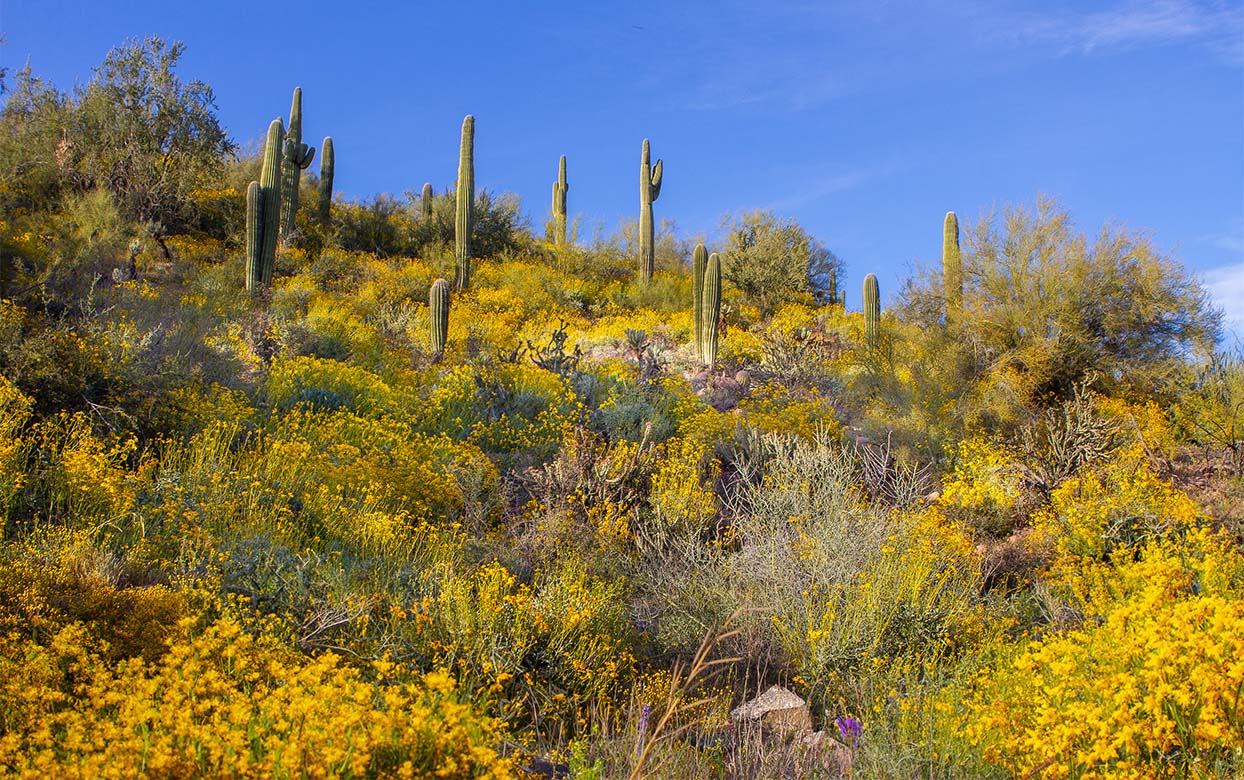Home to more than 4,000 plant species and 550 animals, the Sonoran Desert is the most diverse desert in the world. It’s beautiful array of colors and thriving plants would not be possible without pollinators. They help transfer pollen from male flower parts (stamen) to female flower parts (stigma) to ensure plants fruit, seed and produce young. You may know the honey bee or monarch butterfly, but have you met these other sneaky pollinators around the Sonoran Desert?
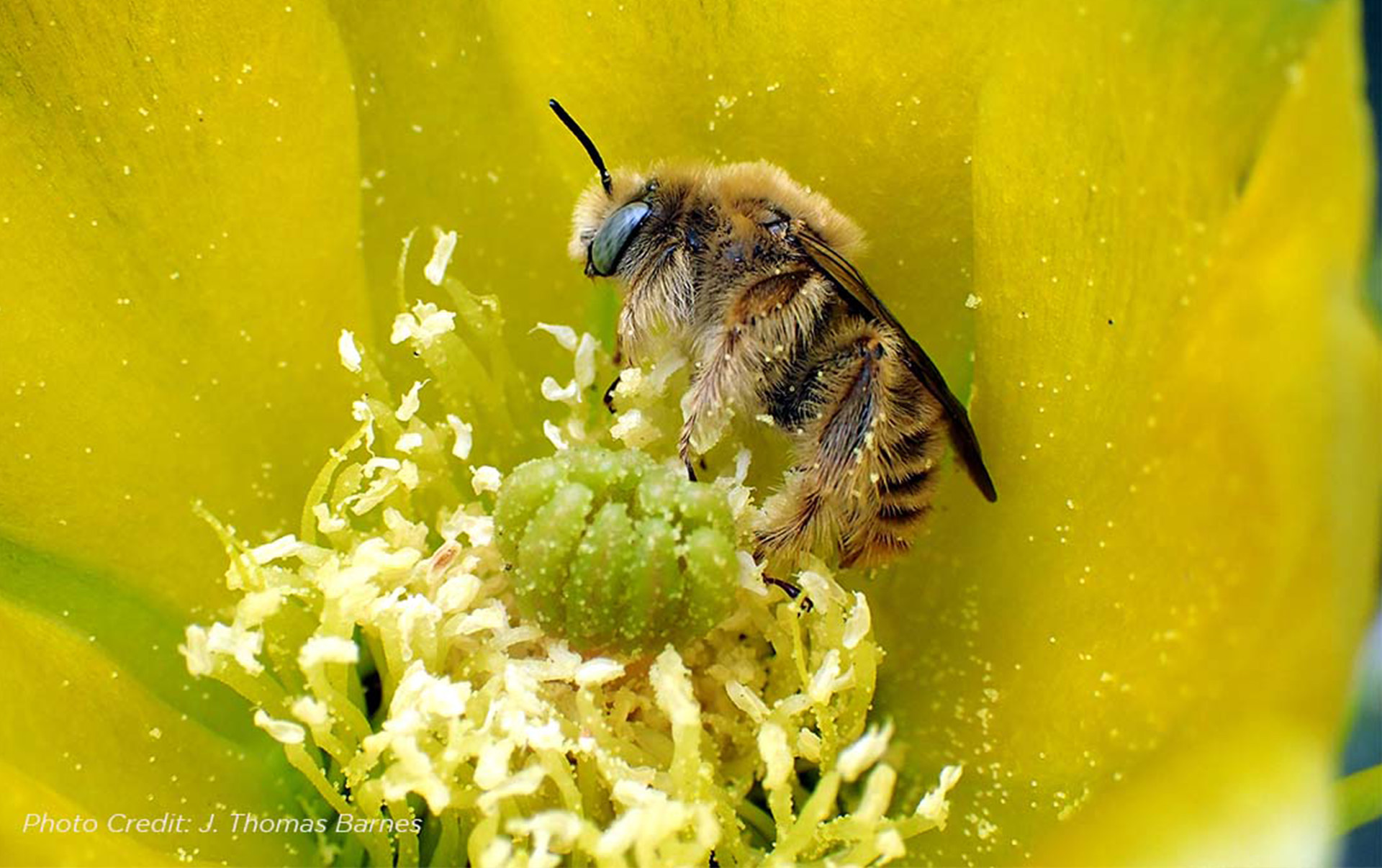
Native Bees
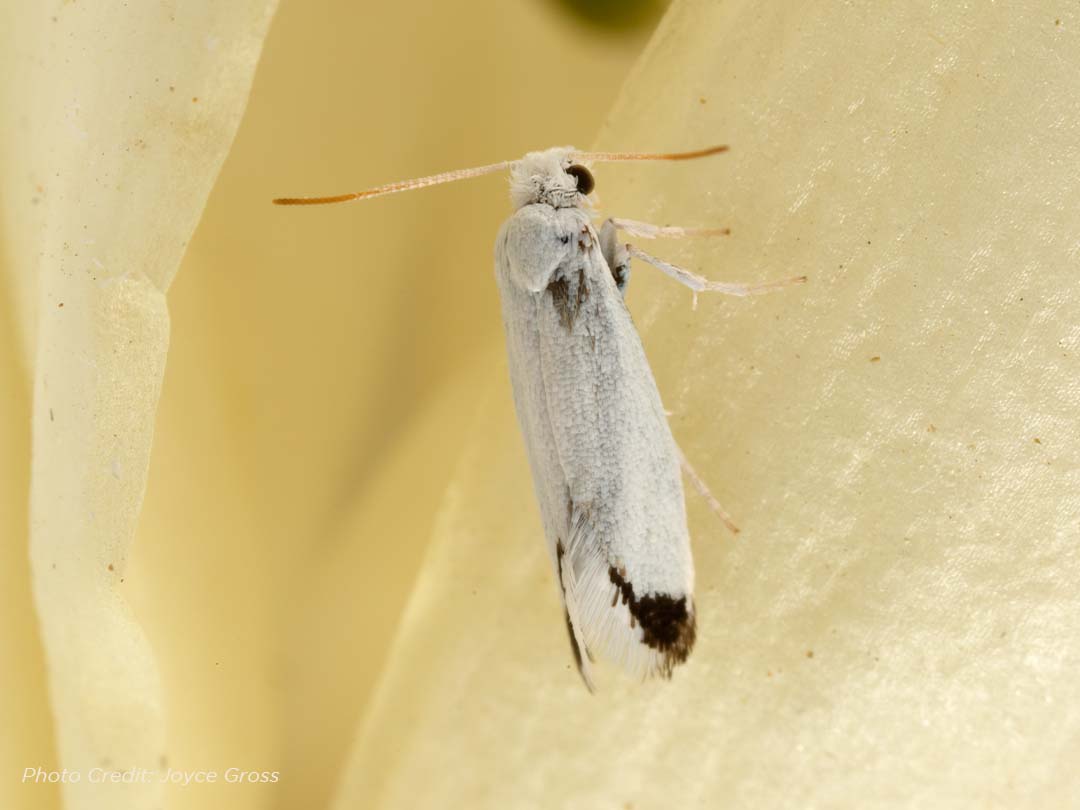
Moths
Moths are crucial to the survival of many desert plants. One in particular has a special co-dependent relationship with its host plant, the yucca moth. This small, white moth, is the only pollinator of the yucca plant and only pollinates yucca. Their form of pollination is more complicated than most, in that the yucca moth does not eat the nectar from a yucca flower and therefore does not have a long straw-like nose like other moths and butterflies. They instead have tentacles, which they use to move pollen from one plant to another. After laying eggs inside a flower, they deposit the collected pollen on the flower’s stigma, ensuring the flower will produce seed that the moth’s larvae can eat. The moth larvae won’t eat all of the seed produced though, leaving some to fall to the ground or be carried off by other animals, allowing new yucca plants to grow. This close relationship between the yucca and yucca moth is called mutualism because it is beneficial to both organisms.
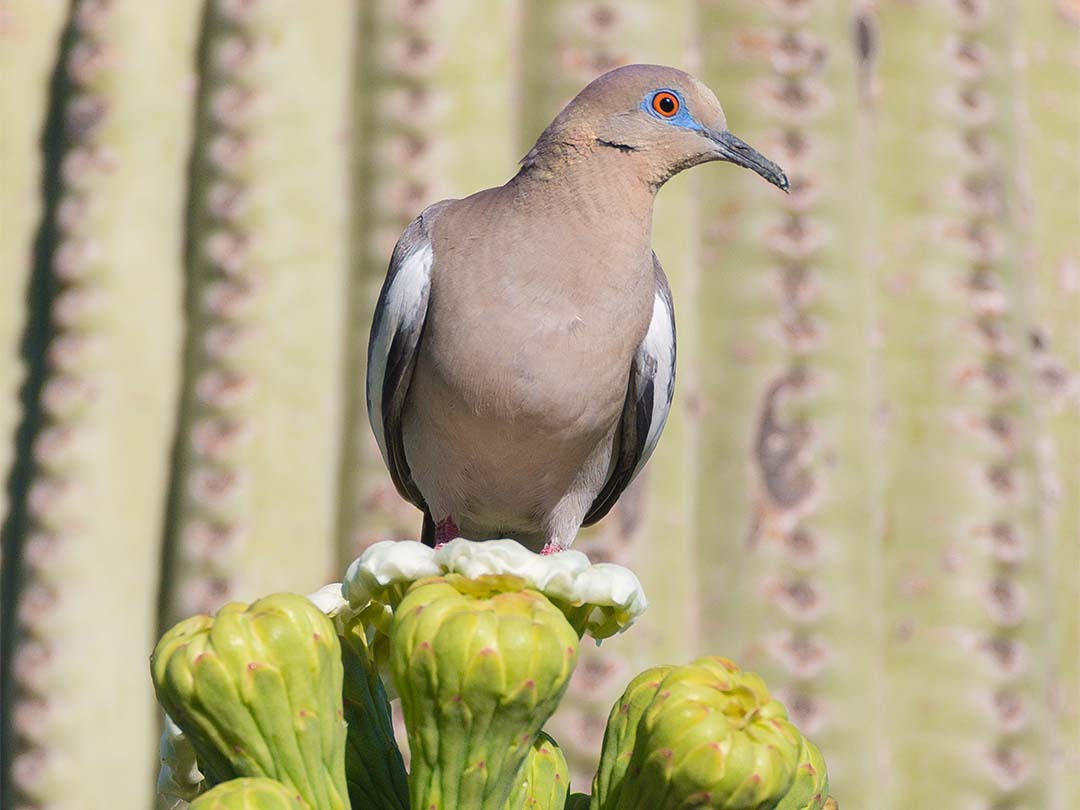
Birds
The hummingbird might come to mind when thinking of bird pollinators in the desert, but what about doves? The white-winged dove is one of the main pollinators of our iconic saguaro cactus. They synchronize their migration patterns to its blooms, with doves migrating to the Sonoran Desert during the hottest and driest times of year as the saguaro blooms. As they drink nectar from the flowers, they collect pollen on their feathers. According to the Desert Museum, not only do they help pollinate the saguaro flower, but they may also help distribute seeds as they feed on the juicy saguaro fruit and then regurgitate saguaro pulp filled with seeds to their young. The trees they build their nests in, like mesquites and palo verdes, often become future nurse trees to baby saguaros as seeds drop to the ground during this feeding process.
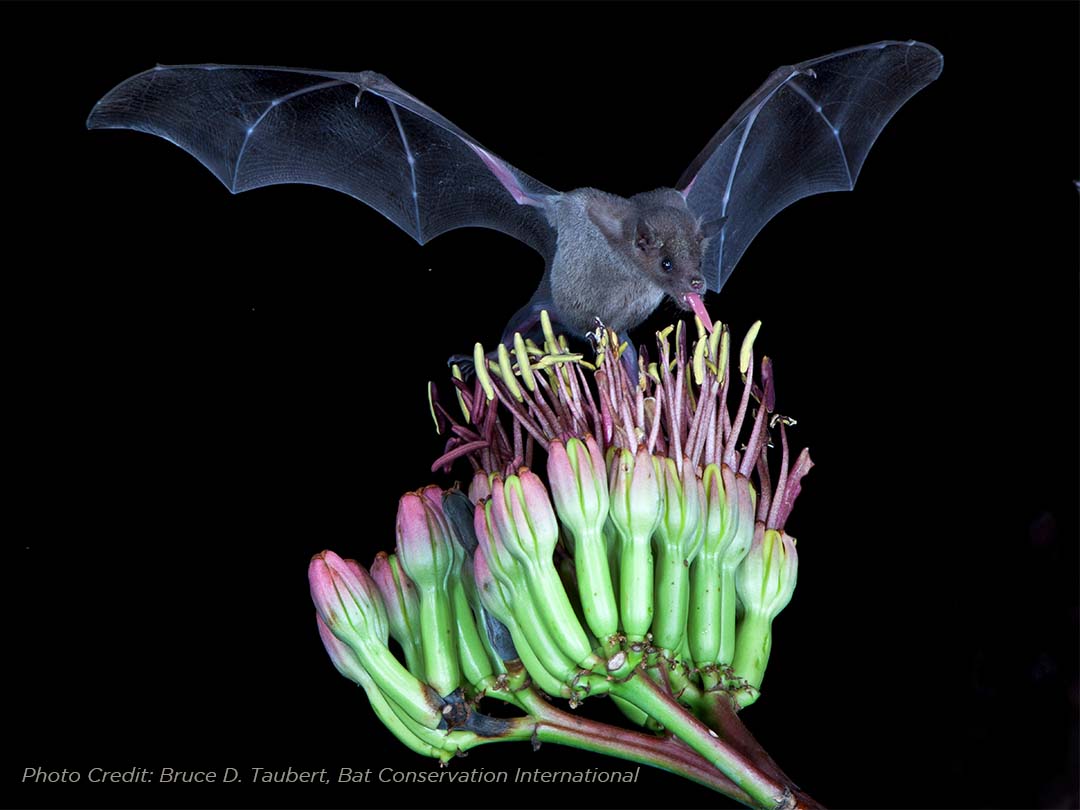
Bats
Ever wonder why so many cactus flowers open at night? Many of our Sonoran Desert flora are pollinated by bats! These nectar loving mammals are the primary night pollinator of the saguaro and organ pipe cactus. For example, the lesser long-nosed bat (Leptonycteris yerbabuena), with a tongue the length of its body, hovers above saguaro blooms and sticks its long nose inside the flower to drink the sweet nectar, per the National Park Service. As the bats eat, they become covered in pollen, and as they fly from flower to flower, they help with cross pollination.
How can you help these lesser-known pollinators?
Build a pollinator garden with native plants! These Sonoran Desert pollinators have adapted over thousands of years to be the perfect pollinators of desert plants. As we develop and expand urban environments, their habitats are lost. Utilizing plants, including native wildflowers, shrubs, trees, and cactus like prickly pear, yucca and cholla in your garden landscape is the best way to create habitat for these important pollinators. Avoiding the use of pesticide and providing undisturbed outdoor spaces for nesting or roosting will help them thrive.
